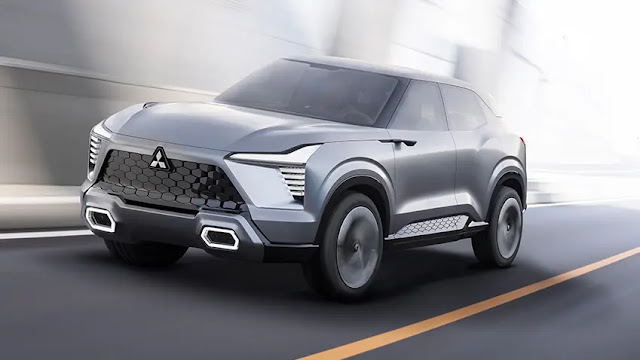Pajero still an old-school SUV icon
In its press material Mitsubishi makes much of the Pajero’s Dakar Rally-winning heritage of a record 12 victories, even though it hasn’t competed there in years.
But the marketing hype isn’t unjustified because the Pajero is still one of the “real” all-terrain vehicles in the market, rather than the ever-growing number of urban soft-roaders that aren’t necessarily designed to get their tyres muddy.
Point this Mitsubishi at a rugged 4x4 trail and it has all the tools needed to plod through picturesque pastures and duel with deep dongas with minimum chance of getting stuck.
A lofty 235mm ground clearance, a 36.6 degree approach angle (superior to rivals such as Prado, Pathfinder and Discovery), 25 degree departure angle, selectable all-wheel drive, low range, and centre and rear differential locks ensured that the long-wheelbase Pajero cruised through our steep and slippery off-road trail.
The Super Select 4WD system also allows convenient shifting between two and four-wheel drive at up to 100km/h.
The three-door SWB derivative (not tested here) has even better approach and departure angles of 34.8 degrees and 36.7 degrees respectively, but the longer five-door Mitsubishi Pajero LWB still has plenty of offroading ability along with a family-sized cabin.
The 2015 model year range, in both short and long-wheelbase versions, features a number of cosmetic enhancements as the last upgrade on the current derivative before it’s replaced by the fifth-generation Pajero in about two years’ time.
A minor facelift sees a grille and bumper restyled with LED daytime running lights incorporated into the headlamps, while other cosmetic tweaks include an upgrade from 17” to 18” alloy rims and a new spare-wheel cover.
The headlamps get an auto-dimming function that switches from high to low-beam when encountering vehicles ahead.
OLD-SCHOOL HANDLING
Improved NVH (noise, vibration and harshness) levels sees the large SUV cruise along more quietly than before.
Like its more direct rivals, the Toyota Prado and Nissan Pathfinder, the Pajero’s talents lie more in its ability to cruise comfortably over rugged trails, where its soft springs and fully-independent suspension deliver an impressively cushy ride that copes gracefully with bumps and ripples. On a smooth road the test vehicle displayed vibrations at certain speeds however, as if the driveshaft or tyres needed balancing.
Comprising the SWB GLS, LWB GLS and the LWB GLS Exceed, all models in the simplified three-model Pajero range are powered by the existing 3.2-litre turbodiesel engine which runs on 50ppm or 500ppm diesel.
There have been no tweaks under the bonnet and the 140kW and 441Nm outputs feel sufficiently gutsy to move this big SUV along at an easy gallop. It slightly out-powers the Toyota Prado 3.0’s 120kW/400Nm and is basically on a par with the Pathfinder 2.5’s 140kW/450Nm.
The five-speed automatic transmission, while not having as many gears as some newer contenders, shifts smoothly and has a manual override functionality.
Our test vehicle achieved reasonably economical consumption of 9.6 litres per 100km in mostly freeway driving, but it’s a much thirstier beast when off-roading.
PRACTICAL TOUCHES
The Pajero’s interior is also showing some “senior” moments, particularly the laughably old-fashioned “calculator screen” information display. Also, the door pockets are quite thin and difficult to access because there’s not much space to stick your hand between the seats and the doors.
The steering adjusts only for height and not reach, which meant my knees touched the dashboard when I sat at my ideal arm distance.
But that said, there are some practical touches in the Pajero’s passenger quarters too, for instance the expandable flap in the sun visors which allows you to block out the sun along the entire length of the side window. The extra-large storage bin between the front seats is a great feature too, as it takes heaps of clutter.
Handy too is the third row of seats which turns the long-wheelbase Pajero into a seven-seater when needed, but folds out of sight into the floor when not.
These rear seats stow away completely flat and don’t affect luggage space, because the spare tyre is mounted on the tailgate.
In spite of the age factor this is a luxury-specced package and all derivatives come with modern niceties such as a multi-function steering wheel, Bluetooth, voice control, cruise control, automatic climate control, and a radio/CD/MP3 touchscreen audio system with USB and Aux support.
The range-topping LWB GLS Exceed, priced at R659 900, adds items such as a 12-speaker Rockford Fosgate audio system, HID xenon headlights with washers, an electric sliding/tilting panoramic sunroof and a wood/leather combination steering wheel for an added touch of luxury.
ABS brakes, stability control and six airbags provide the peace-of-mind, and the Pajero has a 5-Star Euro NCAP safety rating. The price includes a three-year ort 100 000km warranty and a five-year or 100 000km maintenance plan, with service intervals every 10 000km.
VERDICT
The age lines are showing but the iconic Mitsubishi Pajero is still a vehicle you’d put on a shortlist for a continent-crossing cruise on a range of unfriendly surfaces.
This Mitsubishi comes into its own where the road ends and adventure beckons - get behind the wheel at a Group 1 Mitsubishi dealership - book your test drive.
FACTS
Mitsubishi Pajero 3.2 Di-DGLS Exceed
Engine: 3.2-litre, Four-cylinder turbo/petrol/diesel
Gearbox: Five-speed automatic
Power: 140kW @ 3800rpm
Torque: 441Nm @ 2000rpm
Top speed (claimed): 175km/h
Consumption (claimed): 10.1 litres per 100km
Warranty: Three-year/100 000km
Service/Maintenance plan: Five-year/1000 000km
Article source: https://www.iol.co.za/motoring/cars/mitsubishi/pajero-still-an-old-school-suv-icon-1803126



Comments
Post a Comment